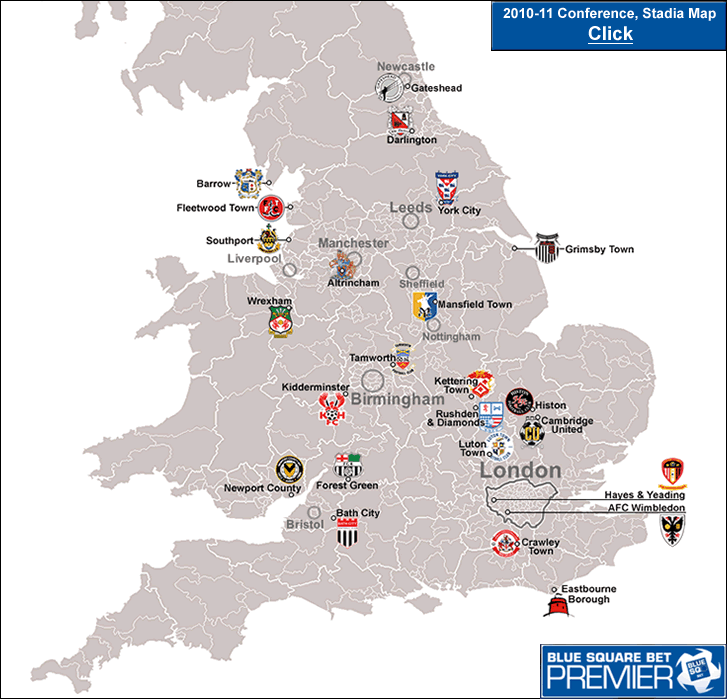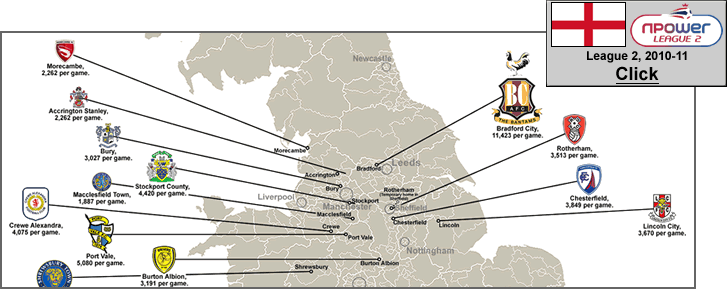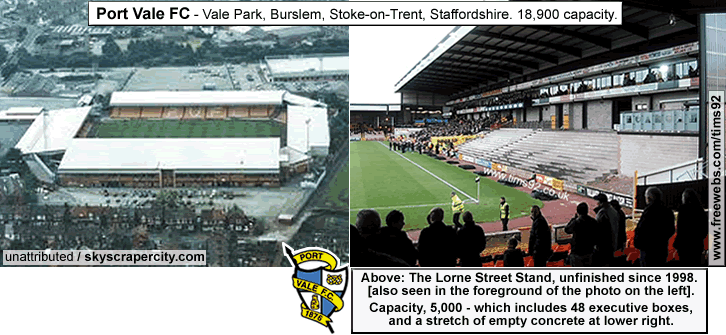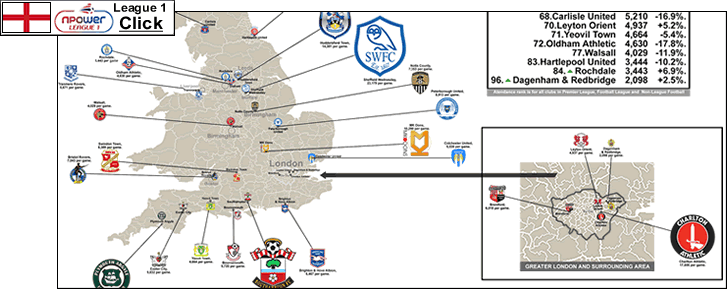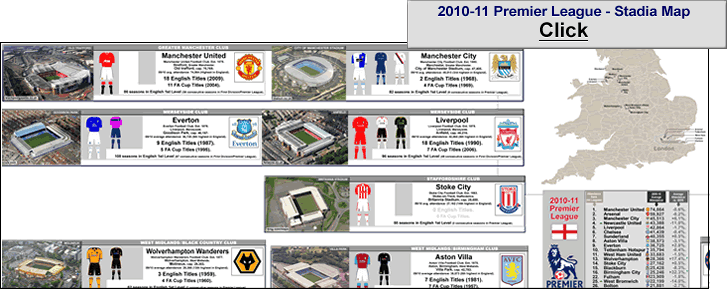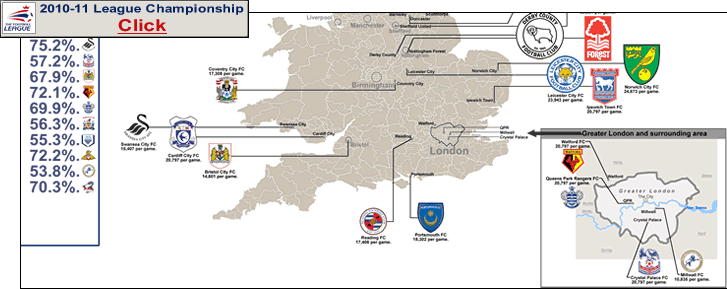The Seasons in 5th Level statistic I have included in each club’s profile box on the map page needs some clarification. There was no automatic promotion into the Football League before 1986-87, and because there was no nationwide Non-League division before 1979-80, it is impossible to determine what was the 5th level of English football prior to the formation of the Alliance Premier League in 1979-80 (so the Seasons in 5th Level statistic is for the 32 seasons from 1979-80 to 2010-11). The Alliance Premier League was given one promotion spot to the old Fourth Division in 1986-87, and at that point the APL changed it’s name to the Conference National (and began inserting a sponsors name into their official name, which is currently the Blue Square Bet Premier League). A second promotion spot was added starting in the 2002-03 season. There is talk these days of adding a third promotion spot, and the argument can be made that this is overdue.
The only way clubs could get into the League before 1986-87 was via election, and there was quite a bit of leeway for continually poor-performing League clubs in the lower reaches of the old Fourth Division. A whole lot of deserving Non-League football clubs never got the shot to play in the League. These days, tiny and unheralded clubs that had no League history prior to 1987 can and do move up the football pyramid…clubs like Dagenham & Redbridge and Yeovil Town in the 3rd Level (ie, League One), and seven clubs in the 4th Level (ie, League Two)… Barnet, Burton Albion, Cheltenham Town, Macclesfield Town, Morecambe, Stevenage, and Wycombe Wanderers. Meanwhile, clubs that were once mainstays of the lower Leagues, such as Darlington, Grimsby Town, Luton Town, Mansfield Town, Wrexham, and York City – well, they are finding it very hard to get back into the League. [Actually, Luton Town has spent more seasons in the top two levels of the League than the lower two levels, so their continuing stay in the wilderness of Non-League football must be especially frustrating to their 6,000-plus regular supporters.] To put it another way, the Conference is on the upswing…in terms of on-field quality, and in terms of fan support.
From Two Hundred Percent.net, from 11th October, 2010, by Ian King, ‘League Two and the Blue Square Premier: The Blurring of the Lines‘.
…
Usually when I make maps with club profile boxes, I include each club’s national titles and national cup titles. That would just end up being wasted space here (the only club here with a ‘major’ title is Luton Town, who won the League Cup in 1988, but I never list the League Cup anyway). So I decided to use the space for 2 topical categories…each club’s all-time best FA Cup run, and best FA Cup run in the last 20 seasons (with all FA Cup runs which reached the 5th Round or higher listed; and all joint-best runs listed). Which is just in time for the 2010-11 FA Cup First Round Proper, to be played the weekend of November 5th through the 7th. My map on 2010-11 FA Cup First Round Proper will be posted Wednesday evening, 3rd November. 14 of the 24 Conference National clubs are in the FA Cup 1st Round {BBC/FA Cup, here}, as well as 18 other, lower-placed Non-League clubs.
…
2009-10 average attendances (from league home matches) are shown at the bottom, center of the map page. The following link has current 2010-11 Conference National average attendances…{from www.mikeavery.co.uk/Divisional Attendance – scroll one quarter down the page to find the fifth box of stats which is 2010-11 Conference Premier Average Home Attendance, here}.
-
Thanks to the contributors to the pages at en.wikipedia.org, ‘2010-11 Football Conference‘.
Thanks to the Footy Mad.co.uk sites, for each club’s league history and cup history data, http://www.footymad.net/blue-square-premier-news/ . Note: this following set of pages on the Football365 site was also very helpful for data, even if it is 9 years now since it has been updated [set to all-time 4th tier, up to 2001-02], http://stats.football365.com/hist/tier4/attable.html
Thanks to mikeavery.co.uk, for 2009-10 attendance figures and attendance rankings.
Thanks to Bing.com/maps/Bird’s Eye view…21 of the football grounds photos on the map page are from this feature. I can’t get images by going to Bing.com, though…I get them by going to each club’s page at en.wikipedia.org, clicking onto the club’s ground, then clicking on the blue-lit numbers of the football ground’s geographical coordinates. There are no Bing.com Bird’s Eye view images for 3 Conference grounds…Barrow’s Holker Road, and Forest Green Rovers’ New Lawn, so for those I had to settle for images via Google Earth satellite view; and Rushden & Diamonds’ Nene Park, so I used an image submitted by jim21 at the en.wikipedia.org page on Nene Park.
